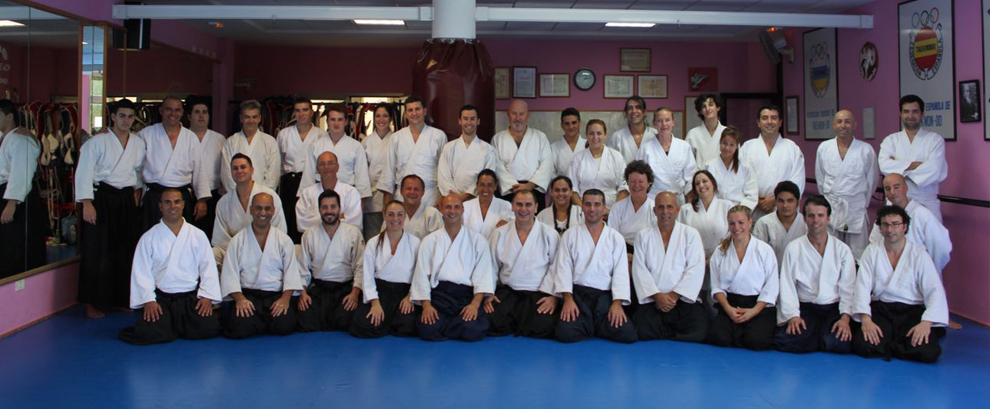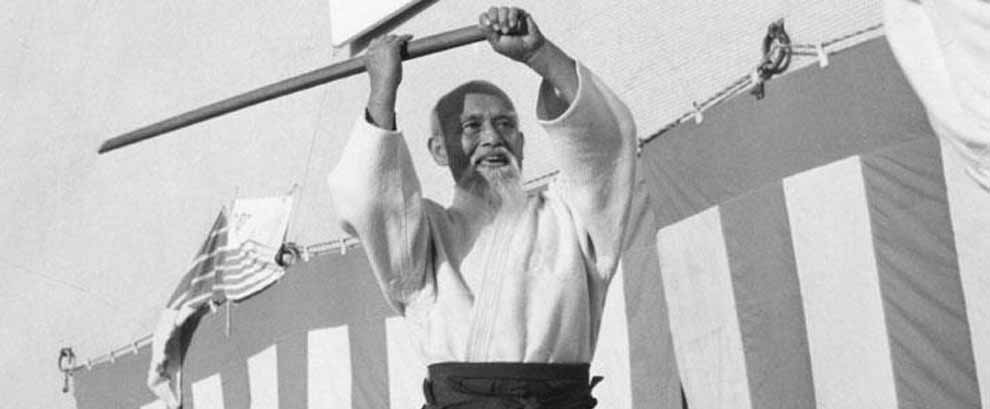A Millennial’s Perspective
This editorial is written by Christina Kelly, a 30-year-old practitioner who began her aikido journey six months ago. Christina, a Harvard graduate, has written editorial for leading media companies such as ESPN and Blizzard Entertainment. This is a story about hope, compassion, and the importance of aikido’s spirit of peaceful reconciliation.
We are in the middle of a very interesting time in human history. صحيح أن العنف بشكل عام انخفض بشكل كبير من أيام التضحية البشرية والقوانين التي كرست المبارزة حتى الموت كوسيلة مشروعة لحل المظالم.,,en,ومع ذلك,,en,ما زلنا نجد أنفسنا في عالم يبدو أنه من الصعب عليه التواصل والتعاون مع الأشخاص الذين لا يشاركوننا وجهات نظرنا,,en,وحيث لا يزال الناس يمكن أن يصبحوا ضحايا من خلال ارتكاب أي خطأ من خلال الهجمات الإرهابية أو القنابل التي لم يتم نشرها بعناية في الحروب,,en,يحتاج الجنس البشري بشدة إلى فلسفة يمكن أن تعلمنا التعاطف مع بعضنا البعض وتوضح أنه حتى الأعداء يستطيعون العمل معًا من أجل خير أكبر,,en,بعبارات أخرى,,en,انها ال,,en,الوقت المثالي لأيكيدو للتألق,,en,لماذا أيكيدو,,en,كحزام أسود يبلغ من العمر 30 عامًا في التايكوندو,,en. However, we still find ourselves in a world where it seems harder and harder to communicate and collaborate with people who don’t share our views, and where people can still become victims through no fault of their own via terrorist attacks or bombs that were not carefully deployed in wars.
The human race desperately needs a philosophy that can teach us empathy for each other and demonstrates that even adversaries can work together for a greater good. In other words, it’s the
perfect time for aikido to shine.
Why Aikido?
As a 30-year-old first dan black belt in taekwondo, نوع أكثر تقليدية من الفنون القتالية,en,شعرت في البداية بالخروج من العنصري عندما بدأت التدريب في أيكيدو قبل ستة أشهر,en,لماذا كنا نتعرف على التفاصيل الدقيقة للمفاصل العظمية والجهاز العضلي,en,لماذا كنا نمارس خمس طرق مختلفة للخروج من رمي,en,لماذا كنا نحاول إغلاق المسافة إلى خصومنا واعتماد أسلوب "تدفق" من التقنية بدلاً من الوقوف ضدهم,en,جاء الجواب عندما بدأت البحث في أصول أيكيدو,en,من دراستي منذ فترة طويلة للغة الصينية والكتابة,en,رأيت أن مصطلح "أيكيدو" في كانجي ترجم إلى شيء مثل "طريقة توحيد القوات,en, I initially felt out of my element when I started training in aikido six months ago. Why were we learning about the subtleties of skeletal joints and the muscular system? Why were we practicing five different ways to fall out of a throw? Why were we trying to close the distance to our opponents and adopt a “flow” style of technique rather than standing firm against them?
The answer came when I started researching the origins of aikido. From my longtime study of the Chinese language and writing system, I saw that the term “aikido” in kanji translated to something like “the way of uniting forces,"حيث القوى التي كانت موحدة لم تكن تلك من أفضل الأصدقاء أو حتى الغرباء النظاميين,,en,لكن اثنين من المعارضين يحتمل أن تشارك في القتال البدني,,en,اتضح أن الأمر يتطلب قدرًا لا بأس به من المعرفة بالتشريح والفيزياء لتحديد كيفية وضع نفسه بأمان ضد المهاجمين ويكون في وضع يسمح له باستخدام تقنية,,en,لأن هذه المعرفة لا يمكن اكتسابها إلا من خلال التجربة,,en,من المنطقي أن يتعاون ممارسو أيكيدو لإظهار بعضهم البعض كيفية تطبيق التقنيات على أنواع مختلفة من الناس,,en,لا اعرف عنك,,en,ولكن إذا هدد شخص ما بمهاجمتي جسديًا,,en,آخر شيء في ذهني هو فكرة توحيد القوى معهم,,en,حتى لو كنت أفضل أن أكون صديقًا لشخص ما بدلاً من الأعداء,,en,و بعد,,en, but two opponents potentially engaging in physical combat. It turns out that it takes a fair amount of knowledge of anatomy and physics to determine how to safely position oneself against and attacker and be in a position to employ a technique. Since this knowledge can only be gained through experience, it makes sense that aikido practitioners join forces to show each other how to apply techniques on various kinds of people.
I don’t know about you, but if someone threatened to attack me physically, the last thing on my mind would be the idea of uniting forces with them, even if I’d rather be friends with someone than enemies. And yet, أيكيدو يعلم أن هذا المفهوم هو مفتاح الدفاع الفعال عن النفس,,en,سواء في الممارسة أو في العالم الحقيقي,,en,في هذا الإطار,,en,لم يكن النجاح يتعلق فقط بتعطيل الخصم بسرعة,,en,ولكن القيام بذلك في الطريقة الأكثر إنسانية ممكن,,en,يتطلب الأمر الكثير من العمل الإضافي للقيام بذلك بشكل صحيح,,en,لكنه يترك الباب مفتوحًا للمصالحة والتفاهم عندما يدرك أحد المهاجمين أنك ستقطع مسافة بعيدة لمنع إلحاق ضرر جسيم بهم,,en,يرجى قراءة هنا,,de, both in practice and in the real world. In this framework, success wasn’t just about disabling an opponent quickly, but doing it in the most humane way possible. It takes a lot of extra work to do it right, but it leaves the door open for reconciliation and understanding when an attacker realizes that you’re going the distance to prevent serious harm to them.










آخر التعليقات